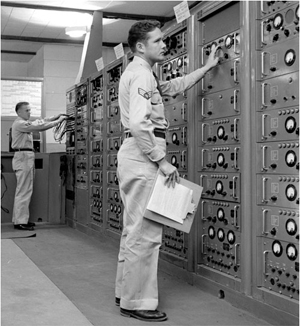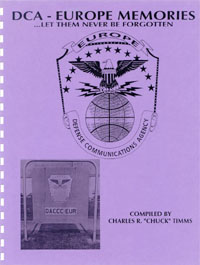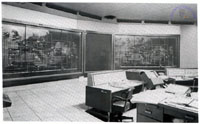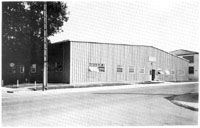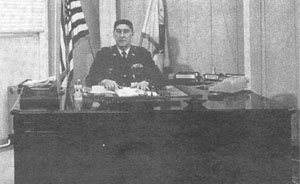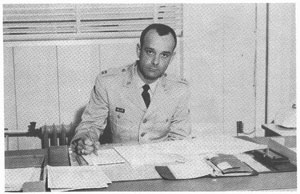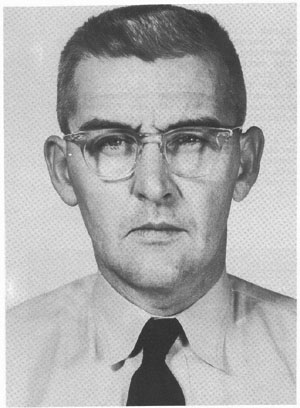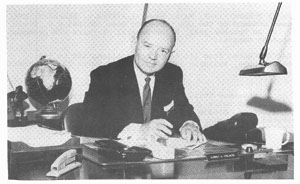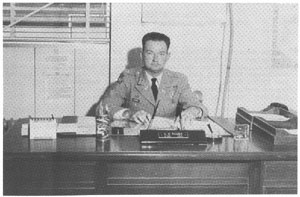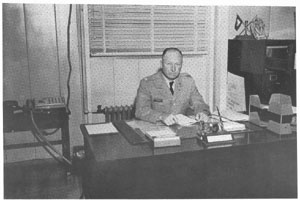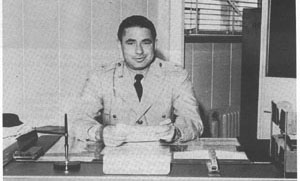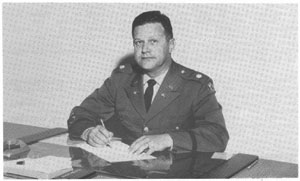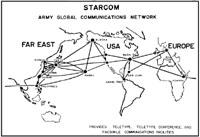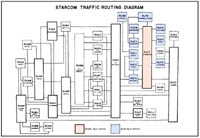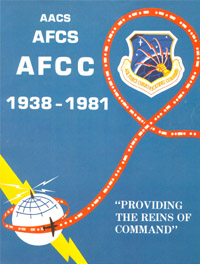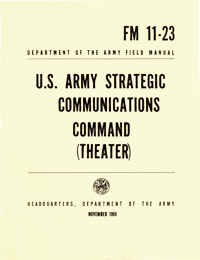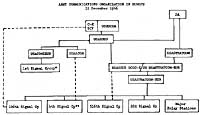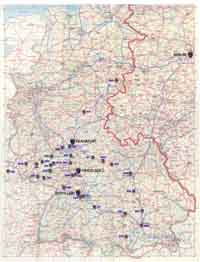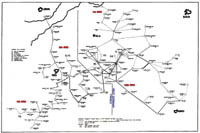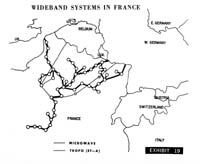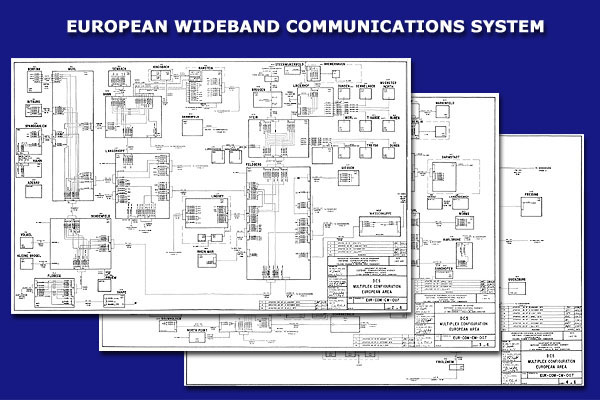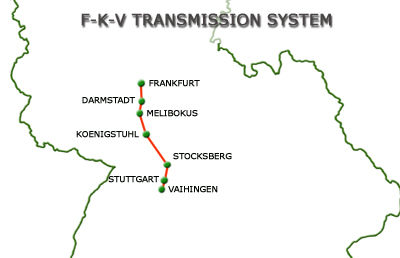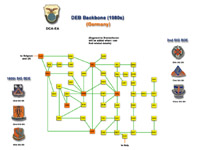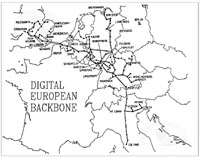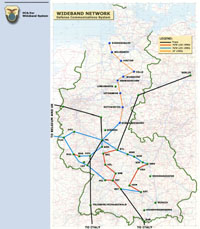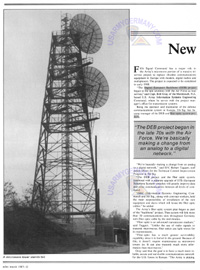| If you do
NOT see the Table of Contents frame to the left of this page, then
Click here to open 'USArmyGermany' frameset |
||||||||||||||||||||||||||||||||||||||||||||||||||||||||||||||||||||||||||||||||||||||||||||||||||||||||||||||||||||||||||||||||||||||||||||||||||||||||||||||||||||||||||||||||||||||||||||||||||||||||||||||||||||||||||||||||||||||||||||||||||||||||||||||||||||||||||||||||||||||||||||||||||||||||||||
Defense Communications Agency, Europe |
||||||||||||||||||||||||||||||||||||||||||||||||||||||||||||||||||||||||||||||||||||||||||||||||||||||||||||||||||||||||||||||||||||||||||||||||||||||||||||||||||||||||||||||||||||||||||||||||||||||||||||||||||||||||||||||||||||||||||||||||||||||||||||||||||||||||||||||||||||||||||||||||||||||||||||
|
|
||||||||||||||||||||||||||||||||||||||||||||||||||||||||||||||||||||||||||||||||||||||||||||||||||||||||||||||||||||||||||||||||||||||||||||||||||||||||||||||||||||||||||||||||||||||||||||||||||||||||||||||||||||||||||||||||||||||||||||||||||||||||||||||||||||||||||||||||||||||||||||||||||||||||||||
|
||||||||||||||||||||||||||||||||||||||||||||||||||||||||||||||||||||||||||||||||||||||||||||||||||||||||||||||||||||||||||||||||||||||||||||||||||||||||||||||||||||||||||||||||||||||||||||||||||||||||||||||||||||||||||||||||||||||||||||||||||||||||||||||||||||||||||||||||||||||||||||||||||||||||||||
|
|
||||||||||||||||||||||||||||||||||||||||||||||||||||||||||||||||||||||||||||||||||||||||||||||||||||||||||||||||||||||||||||||||||||||||||||||||||||||||||||||||||||||||||||||||||||||||||||||||||||||||||||||||||||||||||||||||||||||||||||||||||||||||||||||||||||||||||||||||||||||||||||||||||||||||||||
| The 1950s | ||||||||||||||||||||||||||||||||||||||||||||||||||||||||||||||||||||||||||||||||||||||||||||||||||||||||||||||||||||||||||||||||||||||||||||||||||||||||||||||||||||||||||||||||||||||||||||||||||||||||||||||||||||||||||||||||||||||||||||||||||||||||||||||||||||||||||||||||||||||||||||||||||||||||||||
| US ARMY, EUROPE - Links into Army Strategic Communications | ||||||||||||||||||||||||||||||||||||||||||||||||||||||||||||||||||||||||||||||||||||||||||||||||||||||||||||||||||||||||||||||||||||||||||||||||||||||||||||||||||||||||||||||||||||||||||||||||||||||||||||||||||||||||||||||||||||||||||||||||||||||||||||||||||||||||||||||||||||||||||||||||||||||||||||
| ACAN Network (Army Command and Administrative Network) | ||||||||||||||||||||||||||||||||||||||||||||||||||||||||||||||||||||||||||||||||||||||||||||||||||||||||||||||||||||||||||||||||||||||||||||||||||||||||||||||||||||||||||||||||||||||||||||||||||||||||||||||||||||||||||||||||||||||||||||||||||||||||||||||||||||||||||||||||||||||||||||||||||||||||||||
| For details on the ACAN system, click here to open the ACAN Page. | ||||||||||||||||||||||||||||||||||||||||||||||||||||||||||||||||||||||||||||||||||||||||||||||||||||||||||||||||||||||||||||||||||||||||||||||||||||||||||||||||||||||||||||||||||||||||||||||||||||||||||||||||||||||||||||||||||||||||||||||||||||||||||||||||||||||||||||||||||||||||||||||||||||||||||||
| US AIR FORCE EUROPE - Links into Air Force Strategic Communications | ||||||||||||||||||||||||||||||||||||||||||||||||||||||||||||||||||||||||||||||||||||||||||||||||||||||||||||||||||||||||||||||||||||||||||||||||||||||||||||||||||||||||||||||||||||||||||||||||||||||||||||||||||||||||||||||||||||||||||||||||||||||||||||||||||||||||||||||||||||||||||||||||||||||||||||
| GLOBECOM Network (Global Communications System) | ||||||||||||||||||||||||||||||||||||||||||||||||||||||||||||||||||||||||||||||||||||||||||||||||||||||||||||||||||||||||||||||||||||||||||||||||||||||||||||||||||||||||||||||||||||||||||||||||||||||||||||||||||||||||||||||||||||||||||||||||||||||||||||||||||||||||||||||||||||||||||||||||||||||||||||
| (Source: STARS & STRIPES, European edition, June 1953) | ||||||||||||||||||||||||||||||||||||||||||||||||||||||||||||||||||||||||||||||||||||||||||||||||||||||||||||||||||||||||||||||||||||||||||||||||||||||||||||||||||||||||||||||||||||||||||||||||||||||||||||||||||||||||||||||||||||||||||||||||||||||||||||||||||||||||||||||||||||||||||||||||||||||||||||
| Far-flung airmen rig worldwide party line By Al Milgrom, S&S |
||||||||||||||||||||||||||||||||||||||||||||||||||||||||||||||||||||||||||||||||||||||||||||||||||||||||||||||||||||||||||||||||||||||||||||||||||||||||||||||||||||||||||||||||||||||||||||||||||||||||||||||||||||||||||||||||||||||||||||||||||||||||||||||||||||||||||||||||||||||||||||||||||||||||||||
|
||||||||||||||||||||||||||||||||||||||||||||||||||||||||||||||||||||||||||||||||||||||||||||||||||||||||||||||||||||||||||||||||||||||||||||||||||||||||||||||||||||||||||||||||||||||||||||||||||||||||||||||||||||||||||||||||||||||||||||||||||||||||||||||||||||||||||||||||||||||||||||||||||||||||||||
| follow link to view photos and read the article from the Stars & Stripes archives | ||||||||||||||||||||||||||||||||||||||||||||||||||||||||||||||||||||||||||||||||||||||||||||||||||||||||||||||||||||||||||||||||||||||||||||||||||||||||||||||||||||||||||||||||||||||||||||||||||||||||||||||||||||||||||||||||||||||||||||||||||||||||||||||||||||||||||||||||||||||||||||||||||||||||||||
| (Source: USAF Strategic Communications System, by COL George M. Higginson, USAF, 1954) | ||||||||||||||||||||||||||||||||||||||||||||||||||||||||||||||||||||||||||||||||||||||||||||||||||||||||||||||||||||||||||||||||||||||||||||||||||||||||||||||||||||||||||||||||||||||||||||||||||||||||||||||||||||||||||||||||||||||||||||||||||||||||||||||||||||||||||||||||||||||||||||||||||||||||||||
| The USAF Strategic Communications System (GLOBECOM) is a world-wide long-range, point-to-point and air-ground communications network designed for the control of air operations world-wide. The GLOBECOM system consists of an integrated and engineering system of Air Force radio stations, together with other leased or allocated wire and radio channels, necessary terminal equipment, relay facilities, communications centers, and cryptographic centers, for use by the Air Force as a whole. Not included in the network are tactical and special purpose communications systems. The primary mission of the GLOBECOM system is to provide efficient and effective control of air operations. The secondary mission of the network is to provide the Air Force with an over-all system of command, logistic, and administrative communications to meet Zone of Interior, overseas and inter-theater requirements. COMPOSITION GLOBECOM is not so much an operating network as it is an integration and alignment of several smaller networks: (more to follow) |
||||||||||||||||||||||||||||||||||||||||||||||||||||||||||||||||||||||||||||||||||||||||||||||||||||||||||||||||||||||||||||||||||||||||||||||||||||||||||||||||||||||||||||||||||||||||||||||||||||||||||||||||||||||||||||||||||||||||||||||||||||||||||||||||||||||||||||||||||||||||||||||||||||||||||||
| European Theater Communications - Air Force | ||||||||||||||||||||||||||||||||||||||||||||||||||||||||||||||||||||||||||||||||||||||||||||||||||||||||||||||||||||||||||||||||||||||||||||||||||||||||||||||||||||||||||||||||||||||||||||||||||||||||||||||||||||||||||||||||||||||||||||||||||||||||||||||||||||||||||||||||||||||||||||||||||||||||||||
| Miscellaneous 1807th AACS Wing, Bitburg Air Base, reorganized and redesignated as European-African-Middle Eastern Communications Area prob Oct 1957; moved to Wiesbaden. 1820th AACS Group, Ramstein Air Base, reorganizaedc and redesignated as Central European (CENEUR) AACS Region in Oct 1957. In July 1962, CENEUR and 2nd Communications Group merged at Ramstein Air Base. Commanding Generals: Brig Gen. Haskell E. Neal - commander of 1807th AACS Wing/EAME AACS Area from July 8 1957 to March 9, 1959. The 1807th was redesignated as the European-African Middle Eastern AACS Area in 1957 or 1958. Brig Gen. J. Francis Taylor, Jr. - EAME AACS Area commander from March 15, 1959, until October 1962. |
||||||||||||||||||||||||||||||||||||||||||||||||||||||||||||||||||||||||||||||||||||||||||||||||||||||||||||||||||||||||||||||||||||||||||||||||||||||||||||||||||||||||||||||||||||||||||||||||||||||||||||||||||||||||||||||||||||||||||||||||||||||||||||||||||||||||||||||||||||||||||||||||||||||||||||
| The 1960s | ||||||||||||||||||||||||||||||||||||||||||||||||||||||||||||||||||||||||||||||||||||||||||||||||||||||||||||||||||||||||||||||||||||||||||||||||||||||||||||||||||||||||||||||||||||||||||||||||||||||||||||||||||||||||||||||||||||||||||||||||||||||||||||||||||||||||||||||||||||||||||||||||||||||||||||
| Defense Communications Agency, European Area | ||||||||||||||||||||||||||||||||||||||||||||||||||||||||||||||||||||||||||||||||||||||||||||||||||||||||||||||||||||||||||||||||||||||||||||||||||||||||||||||||||||||||||||||||||||||||||||||||||||||||||||||||||||||||||||||||||||||||||||||||||||||||||||||||||||||||||||||||||||||||||||||||||||||||||||
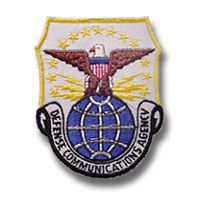 Defense Communications Agency Patch Defense Communications Agency Patch |
||||||||||||||||||||||||||||||||||||||||||||||||||||||||||||||||||||||||||||||||||||||||||||||||||||||||||||||||||||||||||||||||||||||||||||||||||||||||||||||||||||||||||||||||||||||||||||||||||||||||||||||||||||||||||||||||||||||||||||||||||||||||||||||||||||||||||||||||||||||||||||||||||||||||||||
| (Source: DISA-EUR web site, 1997) | ||||||||||||||||||||||||||||||||||||||||||||||||||||||||||||||||||||||||||||||||||||||||||||||||||||||||||||||||||||||||||||||||||||||||||||||||||||||||||||||||||||||||||||||||||||||||||||||||||||||||||||||||||||||||||||||||||||||||||||||||||||||||||||||||||||||||||||||||||||||||||||||||||||||||||||
| History of DISA-Europe (successor to DCA-Eur) 1960 Established as the Defense Area Communications Control Center, Europe (DACC-EUR) at Dreuz Air Base, France. The mission was to exercise operational control of the Defense Communications System (DCS) within the European theater to support United States European Command (USEUCOM) in meeting the telecommunications requirements of the Department of Defense. 1969 Relocated to Patch Barracks, Stuttgart-Vaihingen, FRG. Operational control covered three Regional Control Operational Centers (RCOC), one each in the United Kingdom, Spain and Turkey. 1975 Established Field Offices in Germany, Greece, Italy and England and dis-established the RCOC's. 1983 Centralized management of the DCS by disbanding the Field Offices and transferred all functions to Patch Barracks. 1984 Based on the need for a Joint US Military Mission for Aid to Turkey, the DCA-Turkey Field Office was opened. The mission of DCA-Europe expanded from support of USEUCOM to include support of the US Central Command (USCENTCOM). 1991 The Defense Communications Agency was redesignated the Defense Information Systems Agency (DISA). |
||||||||||||||||||||||||||||||||||||||||||||||||||||||||||||||||||||||||||||||||||||||||||||||||||||||||||||||||||||||||||||||||||||||||||||||||||||||||||||||||||||||||||||||||||||||||||||||||||||||||||||||||||||||||||||||||||||||||||||||||||||||||||||||||||||||||||||||||||||||||||||||||||||||||||||
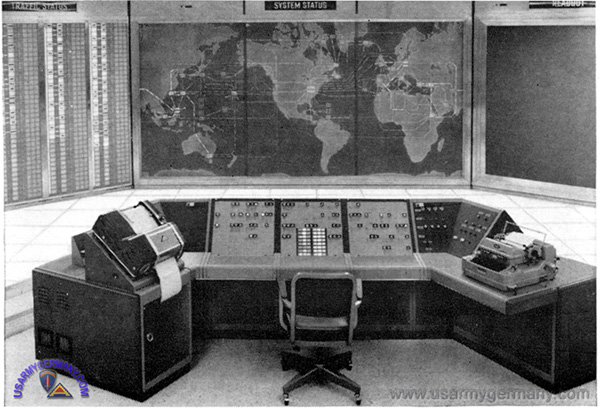 Defense National Communications Control Center (Philco Ad, 1961) |
||||||||||||||||||||||||||||||||||||||||||||||||||||||||||||||||||||||||||||||||||||||||||||||||||||||||||||||||||||||||||||||||||||||||||||||||||||||||||||||||||||||||||||||||||||||||||||||||||||||||||||||||||||||||||||||||||||||||||||||||||||||||||||||||||||||||||||||||||||||||||||||||||||||||||||
| (Source: Email from Lee Hersey) | ||||||||||||||||||||||||||||||||||||||||||||||||||||||||||||||||||||||||||||||||||||||||||||||||||||||||||||||||||||||||||||||||||||||||||||||||||||||||||||||||||||||||||||||||||||||||||||||||||||||||||||||||||||||||||||||||||||||||||||||||||||||||||||||||||||||||||||||||||||||||||||||||||||||||||||
|
||||||||||||||||||||||||||||||||||||||||||||||||||||||||||||||||||||||||||||||||||||||||||||||||||||||||||||||||||||||||||||||||||||||||||||||||||||||||||||||||||||||||||||||||||||||||||||||||||||||||||||||||||||||||||||||||||||||||||||||||||||||||||||||||||||||||||||||||||||||||||||||||||||||||||||
DEFENSE COMMUNICATIONS AGENCY, EUROPEAN AREA HISTORICAL SUMMARY, MARCH 1961 THROUGH JUNE 1965 |
||||||||||||||||||||||||||||||||||||||||||||||||||||||||||||||||||||||||||||||||||||||||||||||||||||||||||||||||||||||||||||||||||||||||||||||||||||||||||||||||||||||||||||||||||||||||||||||||||||||||||||||||||||||||||||||||||||||||||||||||||||||||||||||||||||||||||||||||||||||||||||||||||||||||||||
| On 3 March 1961, the Deputy Secretary of Defense in a Memorandum for the Chairman, Joint Chiefs of Staff, Subject: "Plan for Exercising the Authority of the Chief, Defense Communications Agency" provided for the establishment of two Defense Area Communications Control Centers (DACCC's) during FY 1962. The DACCC's were to be in the European and Pacific Areas with the mission to provide field representation for the Chief, Defense Communications Agency (DCA), and to exercise operational control and supervision of the Defense Communications System (DCS) in their assigned geographical area.
The Director, DCA, Rear Admiral W.D. Irvin, USN, in a memorandum for the Chairman, Joint Chiefs of Staff, dated 13 March 1961, subject: "Establishment of the DCA Communications Control Centers in the European and Pacific Areas" submitted his plan for the activation of the two DACCC's. He recommended that DCA establish interim DACCC's on 1 June 1961 by assuming operational direction of the Department of the Air Force facilities identified as the European-Mediterranean Channel and Traffic Control Unit (EMCTCU) in Wiesbaden, Germany, and the Pacific Channel and Traffic Control Unit (PACTCU) in Hawaii. Effective 1 September 1961, permanent manually operated DACCC's were proposed at Dreux Air Base, France and Kunia Tunnel Annex, Oahu, Hawaii. As soon as practicable, after 1 September 1961, the European and Pacific DACCC's would be converted to semi-automatic operations. The Deputy Secretary of Defense on 2 May 1961 directed the implementation of the DCA plan. However, he withheld concurrence for the location of the European DACCC-E at Dreux Air Base pending investigation of the possibility of securing a more favorable location. A DCA team surveyed additional locations during the latter part of May 1961. A more suitable location for the Center could not be located and a follow-on memorandum from the Secretary dated 26 May 1961 approved Dreux Air Base as the permanent location of DACCC-E. The delay of nearly one month in designating the permanent location held up orders on personnel that were needed to augment the EMCTCU at Wiesbaden, the shipment of equipment and material and other actions required to establish the Center at Dreux. The activation date for establishing the interim Center at Wiesbaden was therefore changed to "during the month of June 1961." The initial DACCC-E cadre of key personnel from DCA consisting of Colonel G.A. Zahn, USAF, Chief; Lt Colonel E.R. Daniels, USMC, Deputy Chief; Commander (then LCdr) J.E. Butler, USN, Operations Officer and Miss J.D. Bushnell arrived Wiesbaden on 1 June 1961 to establish the interim DACCC-E. Headquarters was set up in the "lofts" of Building 07A at Wiesbaden Air Base. Expansion of EMTCU was initiated to accommodate the additional circuits and personnel to effectively direct the DCS in the European Area. The initial cadre at Wiesbaden was built up during June by the addition of MSGT D.L. Matson, SSGT J.R. Heimbach, SSGT L.R.E. Hersey, SSGT D.E. Hoskins, SFC C.J. Clark and SFC R.B. Walters of the U.S. Army; RMCM R.S. Burham, RM1 G.W. Kerber, RM1 R.D. Witt, MA1 J.W. Stutzman, RM1 R.D. Young and RM2 P.W. Savage of the U.S. Navy; and SSGT Reilly, USAF and five airmen of the USAF on TDY from the 12th Mobile Communications Squadron, AFCS. The interim DACCC-E activated at 2700012 June 1961 directing the communications activities of 23 Defense Communications Systems (DCS) reporting stations interconnected by 125 trunks. During the latter part of June and first part of July 1961, Captain D.C. Allen, USAF, YNCM H.H. Boyden, USN, and YN1 H.M. Smith, USN, arrived to open up DACCC-E at Dreux Air Base. An installation team from the U.S. Army Signal Engineering Agency augmented by personnel from the European Ground Electronics Engineering and Installation Agency (USAF) arrived in July to install a temporary Operations Center in Building 132. Army, Navy and Air Force personnel were assigned against the DACCC-E Joint Table of Distribution (JTD), which authorized 22 officers, 30 enlisted men and 8 civilians, continued to arrive at Dreux Air Base during July and August. DACCC-E closed out operations at Wiesbaden Air Base, Germany and established operations at Dreux Air Base, France at 01000A September 1961, as scheduled. The DCS Station Evaluation Program was initiated on 12 October 1961 when an evaluation team headed by Lt Col Daniels departed to evaluate DCS Stations Peshawar, Pakistan; Asmara, Ethiopia; Dhahran, Saudi Arabia; Incirlik, Karamursel Navy and Karamursel Air Force, Turkey. On 1 December 1961, the first major engineering task was assigned. The Director, DCA, charged DACCC-E with coordinating the field planning and implementing actions and assuring interface compatibility of the extensive tropospheric scatter facilities to be installed by the Army and the Air Force in connection with the DCA plan for the improvement of the US-NATO Communications. Requisite transmission engineering for all circuits allocated on DCS broadband systems with the European Area was also made the responsibility of DACCC-E on that date. Fourteen contract engineers and technicians from the Philco Corporation, under the leadership of Mr. W.L. McEver, arrived during the period 18 - 27 January 1962 to build up the Engineering Staff to cope with the new responsibilities. On 1 February 1962, the Transmission Engineering Branch was established. Modification of Building 143 to accommodate the permanent DACCC-E started on 1 March 1962. The modification under a French contractor included preparation of the building to accept the Increment II (computerized) control mechanism, refurbishing the office area and the installation of humidity and temperature control equipment, auxiliary and no-break power. The Secretary of Defense approved on 3 April 1962, DCA Communications Control Centers at communications hubs in the North Atlantic Area, United Kingdom, South Europe, Middle East, Southeast Asia and Far East. Subsequent siting surveys located the three European Centers called Defense Regional Communications Control Centers at Croughton RAF Station, England; Torrejon Air Base, Spain; and Ankara, Turkey. On its first anniversary, 27 June 1962, DACCC-E was operationally directing 33 DCS Stations interconnected by 297 DCS trunks. During October 1962, Headquarters DCA, was reorganized to provide for the Director, DCA, and three Deputy Directors; namely, Deputy Director for National Military Command System, Deputy Director for Communications Satellite Office, and Deputy Director for Defense Communications System. On 29 October 1962, Major General Alfred D. Starbird, USA, assumed command of the DCA replacing Rear Admiral W.D. Irvin, USN. On 30 October 1962, Major General Starbird was promoted to Lieutenant General. DACCC-E moved from its temporary Building 132 to its permanent home, Building 143, Dreux Air Base on 23 - 24 November 1962. On 26 November 1963, the Defense Communications Control Center, United Kingdom (DRCCC-UK) and the Defense Communications Control Center, Middle East and Africa (DRCCC-MEA) were activated. Commander Guy E. Noble, USN, was Chief, DRCCC-UK and Lt. Colonel Charles R. Bach, USAF, Chief of DRCCC-MEA. The Defense Communications Control Center, Spain, Italy and Africa (DRCCC-SIA), activated on 26 December 1962 with Colonel (then Lt. Col) Clark V. Telquist, USA, Chief. During a conference held at Headquarters US European Command (USEUCOM), on 17 December 1962 attended by USCINCEUR, Deputy USCINCEUR, Deputy J-6, JCS Deputy for DCS, DCA and Chief, DACCC-E, USCINCEUR approved the relocation of DACCC-E from Dreux Air Base to Camp des Loges, France. The DCA plan for the relocation was approved by the Secretary of Defense on 5 March 1963. The construction of the new Butler type building and associated air handling and emergency power was assigned to "C" Company, 553rd Engineer Battalion and the Quartermaster Refrigeration Team, both located at Orleans, France. Ground was broken for the new building on 6 May 1963. The name, Defense Area Communications Control Center, Europe (DACCC-E) was discarded and the more appropriate title, Defense Communications Agency, European Area (DCA-EUROPE) assigned as of 1 July 1963. The same order redesignated the Regional Centers to the Defense Communications Agency, United Kingdom Region (DCA-UK); Defense Communications Agency, Spain-Italy-Africa Region (DCA-SIA); and the Defense Communications Agency, Middle East Africa Region (DCA-MEA). DCA-EUROPE relocated from Dreux Air Base to Camp des Loges, France on the week end of 5-8 September 1963. Control operations were cut over to interim facilities at Camp des Loges at O8OOO1Z September 1963 and administrative operations opened at 0800 local 9 September 1963. During the latter part of 1963, DCA-EUROPE started to receive tasks on the installation of the DCS Automatic Voice Network (AUTOVON) which included 14 electronic switching facilities programmed for the European area. A team of Western Electric Engineers under Mr. William C. Schoenthaler, joined DCA-EUROPE in September 1963 to assist DCA in preparing the initial AUTOVON Network Configuration. During October, November and December siting for the switches was accomplished under the direction of DCA-EUROPE. In October 1963, Civil Service civilian manpower space authorizations were assigned to convert the on-board contract engineers and technician spaces (which then totaled 23 Philco and RCA personnel) to civil service positions. Conversion of on-board personnel and recruitment of new personnel was accomplished during the ensuing ninety days. A majority of the on-board contract personnel converted to Civil Service and remained with DCA-EUROPE. Installation of the Increment II control system consisting of an IBM 1410 computer, an automated system display and reporting and control communications terminal equipment started in November 1963. The computer and display installation was accomplished by an IBM team under the direction of Mr. Peter P. Piotrowski, IBM Systems Engineer, assigned DCA-EUROPE. The communications facility installation was accomplished by a team from the US Army Strategic Communications Command under Mr. Byron Wolverton. This marked Mr. Wolverton's third installation effort for DCA-EUROPE -- Buildings 132 and 143 at Dreux Air Base and the new installation at Camp des Loges. The Increment II control system installation was completed in February 1964 and placed under systems test in conjunction with similar systems at DCA-Pacific, DCA-Conus and the Defense Communications Agency Operations Center (DCAOC). The system was observed on 19 February 1964 during an Open House Ceremony attended by 280 guests including top staff members from USEUCOM, Supreme Headquarters Allied Powers Europe (SHAPE), and other commands in the Paris area, French dignitaries and DCA-EUROPE family members. On 1 April 1964, the Increment II system was operational. On 27 June 1964, the third anniversary, DCA-EUROPE had 40 DCS Stations and 2,260 trucks under its operational direction. On 1 July 1964, a new Joint Table of Distribution (JTD) became effective. DCA-EUROPE's increased responsibilities were recognized with an increase from 22 officers, 39 enlisted and 9 civilians to 21 officers, 43 enlisted and 29 civilians. Total strength was increased from 69 to 93. Initial tasks were received in mid-1964 for the implementation of the DCS Automatic Digital Network (AUTODIN). The program then included 3 electronic switching facilities within the European Area. Site surveys were conducted under the direction of DCA-EUROPE during September - December 1964. A team of Western Union Engineers under Mr. William Q. Sanders, joined DCA-EUROPE in November 1964 to assist in the preparation of the AUTODIN Network configuration. In January 1965, the Electronics System Division of the Air Force Systems Command (USAF) activated a Liaison office at DCA-EUROPE. Major M.E. Strange, USAF, was the first ESD Liaison Officer. On its fourth anniversary in 1965, DCA-EUROPE had 65 DCS Stations and 3,870 trunks under its operational control. In July 1965, Colonel Zahn was relieved as Chief, DCA-EUROPE by Colonel Howard E: McCormick, USAF. |
||||||||||||||||||||||||||||||||||||||||||||||||||||||||||||||||||||||||||||||||||||||||||||||||||||||||||||||||||||||||||||||||||||||||||||||||||||||||||||||||||||||||||||||||||||||||||||||||||||||||||||||||||||||||||||||||||||||||||||||||||||||||||||||||||||||||||||||||||||||||||||||||||||||||||||
| APPENDIX Because of an edict issued by the French Government in 1966, all American forces were required to be relocated out of France by 1 May 1967. Since DCA-EUROPE was now effectively collocated with Headquarters, US European Command, it was decided that the unit would be relocated with them at Patch Barracks, Vaihingen, Germany (and that the Seventy Army located there would be relocated elsewhere). This move (called FRELOC-French Relocation) came about in late 1966 and early 1967 while Colonel Howard E. McCormick, USAF (the second DCA-Europe chief) was in command. Major Carl G. Herrmann, US Army and Mr. Kaye Palmer were appointed as FRELOC Project Officers for DCA-EUROPE, and were the first to establish the DCA-Europe office at Patch Barracks. At Patch Barracks, the unit was initially housed on the third and fourth floors of pre-World War II vintage four story buildings which had been formerly used as troop housing and other purposes. Extensive modifications were required and were never really suitable for operations or administrative purposes. However, a couple years later a new building was made available for the unit at Patch Barracks. Sometime during this period (early 1970's maybe), the DCA-EUROPE regional offices at DCA-SIA and DCA-MEA were combined at Ankara, Turkey, and another regional office was established as DCA-Germany. A major organizational change occurred approximately June 1991 as the Defense Communications Agency was disbanded and reorganized as part of the Defense Information Systems Agency (DISA). The organization at Patch Barracks was redesignated as DISA-EUROPE. and is now (in 1995) commanded by Acting Commander Colonel Gene E. Schartzlow, USMC. |
||||||||||||||||||||||||||||||||||||||||||||||||||||||||||||||||||||||||||||||||||||||||||||||||||||||||||||||||||||||||||||||||||||||||||||||||||||||||||||||||||||||||||||||||||||||||||||||||||||||||||||||||||||||||||||||||||||||||||||||||||||||||||||||||||||||||||||||||||||||||||||||||||||||||||||
|
||||||||||||||||||||||||||||||||||||||||||||||||||||||||||||||||||||||||||||||||||||||||||||||||||||||||||||||||||||||||||||||||||||||||||||||||||||||||||||||||||||||||||||||||||||||||||||||||||||||||||||||||||||||||||||||||||||||||||||||||||||||||||||||||||||||||||||||||||||||||||||||||||||||||||||
|
||||||||||||||||||||||||||||||||||||||||||||||||||||||||||||||||||||||||||||||||||||||||||||||||||||||||||||||||||||||||||||||||||||||||||||||||||||||||||||||||||||||||||||||||||||||||||||||||||||||||||||||||||||||||||||||||||||||||||||||||||||||||||||||||||||||||||||||||||||||||||||||||||||||||||||
| Defense Communications System (1960s) | ||||||||||||||||||||||||||||||||||||||||||||||||||||||||||||||||||||||||||||||||||||||||||||||||||||||||||||||||||||||||||||||||||||||||||||||||||||||||||||||||||||||||||||||||||||||||||||||||||||||||||||||||||||||||||||||||||||||||||||||||||||||||||||||||||||||||||||||||||||||||||||||||||||||||||||
| (Source: Various issues of SIGNAL, Journal of the AFCEA) | ||||||||||||||||||||||||||||||||||||||||||||||||||||||||||||||||||||||||||||||||||||||||||||||||||||||||||||||||||||||||||||||||||||||||||||||||||||||||||||||||||||||||||||||||||||||||||||||||||||||||||||||||||||||||||||||||||||||||||||||||||||||||||||||||||||||||||||||||||||||||||||||||||||||||||||
| The Defense Communications Agency was established in May 1960, primarily to manage the long-haul, point-to-point telecommunications lines of the Defense Communications System. The Agency's responsibilities were subsequently increased to include the technical development and technical support of the National Military Command System and the communications support of the World-Wide Command and Control System. In addition, it became responsible for the integrated development of the military telecommunications satellite system. In the 1940's and 50's, each of the three Armed Services developed their own long-haul, point-to-point communications systems (Army - STARCOM; Air Force - AIRCOMNET). These systems were largely incompatible and the equipment, procedures, operating practices, and engineering standards used varied between the three services. In the late 1950's, a growing awareness of the increasing operational and technical dependence between the services and an increasing congressional discontent over evidence of waste and inefficiencies in military communications areas led to the move to create a single managing authority over the long-haul, point-to-point communications of the three services and to merge the separate systems into a single integrated system. Thus the DCA was born. The Defense Communications System was established concurrently with the activation of the DCA. To manage the integrated network (DCS), an over-all communications control complex was created that was separate from the technical control arrangements that the three services alraedy had in place for their comunications systems. The Defense Communications Control Center Complex initially consisted of the Defense National Communications Control Center located in Washington, DC and area control centers located in the continental US, Hawaii, Alsaka and Europe (DACC-EUR at Dreuz Air Base, France). The experience gained by the DCA in the initail period demonstarted a need for further expansion of the control center concept which led to activation (between Oct-Dec 1962) of six regional control centers as subordinate elements of the area control centers (under DACC-EUR - England, Spain, Turkey). In July 1963, the area and regional control centers were redesignated. DCAA-EUR became known as the Defense Communications Agency-European Area. The three regional centers were redesignated as DCA-Regions. At the same time, the DNCCC was redesignated as the DCA Operations Center. These centers maintained status information on all DCS communications in their assigned areas of responsibility. On the basis of hourly station reports, instructions were issued to the Defense Communications Stations as indicated - e.g. rerouting of circuits to by-pass a trouble area, or reallocation of resources to meet unforeseen demands and emergencies. To be continuously aware of the communications activity surrounding them, each control center maintained a data base composed of all pertinent resources, including curcuits, channels, networks, contingency reserves, historical data concerning past utilization, reliability, efficiency of the resources, plus a knowledge of operational rules. Scheduled and special status reports together with answers to specific queries generated by the centers complement the data base and make possible the gathering of complete and current station and circuit conditions, and traffic status for the centers' areas of geographical responsibility. With the exception of the national center, each center conducts circuit and transmission engineering and in addition provides technical assistance to their respective stations and users. Such assistance may include recommendations for site location, terminal equipment, and maintenance improvements. The centers also monitor the adherence of their stations to established standards. Each regional center is being equipped with teletypewriter and voice terminal equipment, including a semi-automatic store-and-forward capability to facilitate status report delivery. The regional center is also equipped with a status display manually operated but adaptable for utilization of automatic sensing or computer drives. The system display portrays, by geographical relationships, the Defense Communications System stations and trunking of primary concern to the control center; a network display reflects the conditions of selected networks related to selected stations and trunking. A control console provides for the control of system, network, and projection displays. The installation of the regional communications status center equipment is being accomplished by Army and Air Force installation teams. |
||||||||||||||||||||||||||||||||||||||||||||||||||||||||||||||||||||||||||||||||||||||||||||||||||||||||||||||||||||||||||||||||||||||||||||||||||||||||||||||||||||||||||||||||||||||||||||||||||||||||||||||||||||||||||||||||||||||||||||||||||||||||||||||||||||||||||||||||||||||||||||||||||||||||||||
| (Source: DCS Primary Relay Station Drake, Japan Welcome Booklet, 1962; Assorted Army Acronyms and other Alphabet Soup of the 1950s and 1960s, by James Brendage and Three Years With ADA, by Leonard H. Anderson; these documents and other related information found on Harold Hallikainen's excellent web page "Saving History from the Dumpster" ) | ||||||||||||||||||||||||||||||||||||||||||||||||||||||||||||||||||||||||||||||||||||||||||||||||||||||||||||||||||||||||||||||||||||||||||||||||||||||||||||||||||||||||||||||||||||||||||||||||||||||||||||||||||||||||||||||||||||||||||||||||||||||||||||||||||||||||||||||||||||||||||||||||||||||||||||
|
||||||||||||||||||||||||||||||||||||||||||||||||||||||||||||||||||||||||||||||||||||||||||||||||||||||||||||||||||||||||||||||||||||||||||||||||||||||||||||||||||||||||||||||||||||||||||||||||||||||||||||||||||||||||||||||||||||||||||||||||||||||||||||||||||||||||||||||||||||||||||||||||||||||||||||
| (Source: AACS - AFCS - AFCC, 1938-1981, Providing the Reins of Command, AFCC Office of History, 1981) | ||||||||||||||||||||||||||||||||||||||||||||||||||||||||||||||||||||||||||||||||||||||||||||||||||||||||||||||||||||||||||||||||||||||||||||||||||||||||||||||||||||||||||||||||||||||||||||||||||||||||||||||||||||||||||||||||||||||||||||||||||||||||||||||||||||||||||||||||||||||||||||||||||||||||||||
| AIRCOMNET (Air Force Communications Network) In 1951, the Air Force established the Global Communications System (GLOBECOM) which was the first integrated communications system to span the world. It replaced the Air Force's portion of the ACAN system, a WWII-era network that utilized single-channel voice, teletype links, and torn-tape relays which were carried over both low and high frequency radio as well as wire. This system was deemed outdated by its slowness and low volume of traffic it could carry. GLOBECOM was originally a modest program calling for the installation of high-power trunk circuits and modernization of the major AACS point-to-point circuits. Planning, which began in 1946, continued into 1950. The Korean War led to the expansion of the plan and caused Congress to free the monies needed for construction. Construction of the GLOBECOM system began in 1951. GLOBECOM was basically an integrated and engineered system of interconnected Air Force radio stations, together with other leased commercial or allocated Army and Navy long-haul wire and radio channels, the necessary terminal equipment, relay facilities, communications centers, and cryptographic facilities. The facilities were all permanent and similar to civilian commercial systems. Internal, tactical, and special purpose communications systems of the various commands, used to accomplish specific missions within their organizations, were excluded. |
||||||||||||||||||||||||||||||||||||||||||||||||||||||||||||||||||||||||||||||||||||||||||||||||||||||||||||||||||||||||||||||||||||||||||||||||||||||||||||||||||||||||||||||||||||||||||||||||||||||||||||||||||||||||||||||||||||||||||||||||||||||||||||||||||||||||||||||||||||||||||||||||||||||||||||
|
||||||||||||||||||||||||||||||||||||||||||||||||||||||||||||||||||||||||||||||||||||||||||||||||||||||||||||||||||||||||||||||||||||||||||||||||||||||||||||||||||||||||||||||||||||||||||||||||||||||||||||||||||||||||||||||||||||||||||||||||||||||||||||||||||||||||||||||||||||||||||||||||||||||||||||
| Each major command wanted individual ownership of all its own communications and support. But the quantum jump in the volume of communications and the sheer size of the networks they required, plus the skyrocketing costs, served to curb independent ownership of all command-needed communications. Air-to-ground capability, added in 1952, allowed commanders to talk to aircraft up to 3,000 miles away. The system was renamed AIRCOM, which stood for the Air Force Communications Complex, in 1955. Under this system, both 16-channel single side-band facilities and 36-channel ionospheric and tropospheric-scatter systems were added. Fourchannel multiplex circuits for high frequency radio and landlines became standard. Microwave relay systems with 24-voice channels, each channel capable of carrying 16 teletype channels, became common. The first fully automatic switching equipment was added in 1957. Operated by Western Union for AACS, these automated switches saved millions of dollars annually by eliminating the need for hundreds of operators. One operator could do the work formerly done by eight. In 1956, AIRCOM was renamed Strategic Communications System or STRATCOM. It integrated the important military and civilian circuits and terminals, operated until then by other commands, with the GLOBECOM system. These included the Air Force Communications Network, the Air Force Operations Network, the Air Force Global Air-to-Ground Communications System, the Air Force Weather Teletype and Weather Facsimile Networks, the Air Force Global Weather Broadcasts and Intercept System, and the Strategic Air Command Communications Network. STRATCOM was a $350 million investment which handled a monthly average of 3.5 million messages and 232,000 aircraft contacts. The terms GLOBECOM and STRATCOM were dropped in 1959 to return to the term AIRCOM. By 1960, the system consisted of 33 major and many minor stations, all of which were compatible with the Army and Navy portions of the Armed Forces integrated communications network. Messages were handled via speech, teletype, facsimile, Morse code, and data. A new network was added to the AIRCOM system i n 1960. Called the Combat Logistics Network (COMLOGNET), its purpose was to furnish the communications needed for the Air Force electronic data processing equipment programs. AACS was given full operational control and responsibility for the new network. The Air Force Communications Network and the Air Force Operations Network were the busiest subsystems in the AACS-operated Air Force communications complex, known as AIRCOM. During the second half of 1960, relay stations of the Air Force Communications Network handled 33 million messages, while those of the Air Force Operations Network handled another 7.5 million. Altogether, AACS operated approximately 1,350 channels of communications that connected its major relay stations alone. |
||||||||||||||||||||||||||||||||||||||||||||||||||||||||||||||||||||||||||||||||||||||||||||||||||||||||||||||||||||||||||||||||||||||||||||||||||||||||||||||||||||||||||||||||||||||||||||||||||||||||||||||||||||||||||||||||||||||||||||||||||||||||||||||||||||||||||||||||||||||||||||||||||||||||||||
By the beginning of 1970, the following programs had been implemented by DCA: |
||||||||||||||||||||||||||||||||||||||||||||||||||||||||||||||||||||||||||||||||||||||||||||||||||||||||||||||||||||||||||||||||||||||||||||||||||||||||||||||||||||||||||||||||||||||||||||||||||||||||||||||||||||||||||||||||||||||||||||||||||||||||||||||||||||||||||||||||||||||||||||||||||||||||||||
| Army Strategic Communications Command | ||||||||||||||||||||||||||||||||||||||||||||||||||||||||||||||||||||||||||||||||||||||||||||||||||||||||||||||||||||||||||||||||||||||||||||||||||||||||||||||||||||||||||||||||||||||||||||||||||||||||||||||||||||||||||||||||||||||||||||||||||||||||||||||||||||||||||||||||||||||||||||||||||||||||||||
| (Source: USAREUR STATION LIST, 30 June 1967) | ||||||||||||||||||||||||||||||||||||||||||||||||||||||||||||||||||||||||||||||||||||||||||||||||||||||||||||||||||||||||||||||||||||||||||||||||||||||||||||||||||||||||||||||||||||||||||||||||||||||||||||||||||||||||||||||||||||||||||||||||||||||||||||||||||||||||||||||||||||||||||||||||||||||||||||
| UNITS ASSIGNED/ATTACHED TO STRATCOM-EUR (June 1967): | ||||||||||||||||||||||||||||||||||||||||||||||||||||||||||||||||||||||||||||||||||||||||||||||||||||||||||||||||||||||||||||||||||||||||||||||||||||||||||||||||||||||||||||||||||||||||||||||||||||||||||||||||||||||||||||||||||||||||||||||||||||||||||||||||||||||||||||||||||||||||||||||||||||||||||||
|
||||||||||||||||||||||||||||||||||||||||||||||||||||||||||||||||||||||||||||||||||||||||||||||||||||||||||||||||||||||||||||||||||||||||||||||||||||||||||||||||||||||||||||||||||||||||||||||||||||||||||||||||||||||||||||||||||||||||||||||||||||||||||||||||||||||||||||||||||||||||||||||||||||||||||||
| (Source: FM 11-23, US Army Strategic Communications Command (Theater), November 1969) | ||||||||||||||||||||||||||||||||||||||||||||||||||||||||||||||||||||||||||||||||||||||||||||||||||||||||||||||||||||||||||||||||||||||||||||||||||||||||||||||||||||||||||||||||||||||||||||||||||||||||||||||||||||||||||||||||||||||||||||||||||||||||||||||||||||||||||||||||||||||||||||||||||||||||||||
|
||||||||||||||||||||||||||||||||||||||||||||||||||||||||||||||||||||||||||||||||||||||||||||||||||||||||||||||||||||||||||||||||||||||||||||||||||||||||||||||||||||||||||||||||||||||||||||||||||||||||||||||||||||||||||||||||||||||||||||||||||||||||||||||||||||||||||||||||||||||||||||||||||||||||||||
| (Source: SIGNAL, Jan and April 1965) | ||||||||||||||||||||||||||||||||||||||||||||||||||||||||||||||||||||||||||||||||||||||||||||||||||||||||||||||||||||||||||||||||||||||||||||||||||||||||||||||||||||||||||||||||||||||||||||||||||||||||||||||||||||||||||||||||||||||||||||||||||||||||||||||||||||||||||||||||||||||||||||||||||||||||||||
| First Anniversary for STRATCOM Content under revision |
||||||||||||||||||||||||||||||||||||||||||||||||||||||||||||||||||||||||||||||||||||||||||||||||||||||||||||||||||||||||||||||||||||||||||||||||||||||||||||||||||||||||||||||||||||||||||||||||||||||||||||||||||||||||||||||||||||||||||||||||||||||||||||||||||||||||||||||||||||||||||||||||||||||||||||
| (Source: 9th Signal Command web site) | ||||||||||||||||||||||||||||||||||||||||||||||||||||||||||||||||||||||||||||||||||||||||||||||||||||||||||||||||||||||||||||||||||||||||||||||||||||||||||||||||||||||||||||||||||||||||||||||||||||||||||||||||||||||||||||||||||||||||||||||||||||||||||||||||||||||||||||||||||||||||||||||||||||||||||||
In 1947, the War Department redesignated the 9423rd TSU, War Department Signal Center, as the U.S. Army Command and Administrative Communications Agency in 1947, simplifying the title to U.S. Army Communications Agency 10 years later. Even as the reorganization of the Department of Defense communications network got under way in the early 1960s, the Cuban Missile Crisis of October 1962 exposed serious flaws in communications between the U.S. State Department, American Embassies, and the Soviet Union. Post-crisis analysis of communication delays confirmed a need for a rapid upgrade of interdepartmental and international communication capabilities. President Kennedy ordered the establishment of the National Communications System interconnecting the State Department, the Department of Defense, and several other federal agencies. The Secretary of Defense became the executive agent for the NCS and the director of the Defense Communications Agency (later redesignated Defense Information Systems Agency) was appointed NCS manager. The USASCC’s mission, as the Army proponent of the NSC, expanded in December 1962 to encompass As USASCC’s mission grew, so too, did its physical appearance. Activation of the 11th Signal Group (later Brigade) and the 505th Signal Company May 1, 1963 at Fort Lewis, Wash., provided USASCC with tables of organization and equipment units which, when adequately trained and equipped, could support emergency operations; and emergency operations were not long in the making. March 1, 1964, the Army established the Office of the Chief of Communications-Electronics and discontinued the Office of the Chief Signal Officer. Simultaneously, USASCC (now U.S. Army STRATCOM) became upgraded to major Army command status with full command and control over worldwide strategic communications. The organizational structure of STRATCOM quickly expanded with the establishment of STRATCOM-Europe in July 1964, STRATCOM-Pacific in September 1964 (and STRATCOM-Pacific’s STRATCOM facilities in Hawaii, Vietnam, Okinawa, Taiwan and Thailand in November 1964). As the conflict in Southeast Asia committed more and more American forces and services, the mission of STRATCOM in Vietnam grew proportionately. Signal groups and battalions operated in the various Corps tactical zones without the benefit of centralized command and control. To fill that void, STRATCOM established the 1st Signal Brigade. Formed in 1966 in Vietnam, the 1st Signal Brigade assumed command and control over all Army communications-electronics resources in Southeast Asia. Scattered among 200 sites in Vietnam and Thailand, the brigade became the largest combat signal unit ever formed. In 1967, STRATCOM headquarters moved from Washington, D.C., to Fort Huachuca, Ariz. In 1973, STRATCOM assumed responsibility for the communications systems at all Army posts, camps and stations, as well as depots and arsenals. This responsibility included all telephone systems, telecommunications centers, non-tactical radio systems, television distribution systems and public address systems. As the nature of the war in Vietnam blurred the distinction between strategic and tactical communications, STRATCOM personnel and equipment became more and more supportive of tactical operations. As such, STRATCOM leaders moved to modify the command’s designation to better suit its changing mission by dropping “strategic” from its designation. In 1973, the Army redesignated STRATCOM as the U.S. Army Communications Command. During the late 1970s and into the 1980s, the rapid proliferation of computers and ADPE throughout the Army extended the mission of USACC into information systems management. Consequently, in May 1984, USACC was redesignated U.S. Army Information Systems Command. Under the Army’s new Information Mission Area concept, USAISC began to consolidate communications with automation and other IMA disciplines to include records management, visual information, printing and publication. Before the advent of IMA, automation resource control and acquisition management was the business of individual MACOMs. Now, the Army recognized a need to centralize efforts globally under the IS management authority of USAISC. |
||||||||||||||||||||||||||||||||||||||||||||||||||||||||||||||||||||||||||||||||||||||||||||||||||||||||||||||||||||||||||||||||||||||||||||||||||||||||||||||||||||||||||||||||||||||||||||||||||||||||||||||||||||||||||||||||||||||||||||||||||||||||||||||||||||||||||||||||||||||||||||||||||||||||||||
| (Source: Annual History, U.S. Army, Europe, 1 January -31 December 1966) | ||||||||||||||||||||||||||||||||||||||||||||||||||||||||||||||||||||||||||||||||||||||||||||||||||||||||||||||||||||||||||||||||||||||||||||||||||||||||||||||||||||||||||||||||||||||||||||||||||||||||||||||||||||||||||||||||||||||||||||||||||||||||||||||||||||||||||||||||||||||||||||||||||||||||||||
| Realignment of Communications Support Background On 1 July 1964 the Department of the Army had activated the United States Army Strategic Communications Command as a separate major command under the Army Chief of Staff. Concurrently, the Department had formed the United States Army Strategic Communications Command, Europe (USASTRATCOM-EUR), as a subcommand that was to control a substantial portion of USAREUR's communications resources, including the 106th Signal Group --supporting USEUCOM -- the 22d Signal Group, and the major relay stations. After several months of experience, USAREUR had recommended improvements in the support rendered by USASTRATCOM-EUR, which were in full agreement with the unified-management principle for communications resources. In July 1965 the Department of the Army had therefore directed the further realignment of USAREUR's signal resources under USASTRATCOM-EUR, stipulating that the Commanding General of USASTRATCOM-EUR serve also as USAREUR's Deputy Chief of Stuff, Communications-Electronics (DCSC-E). On 1 November USAREUR had transferred 17 units, including the 516th Signal Croup -- supporting USAREUR headquarters -- and the headquarters resources of the U.S. Army Signal Brigade, Europe, to USASTRATCOM-EUR (Chart below) |
||||||||||||||||||||||||||||||||||||||||||||||||||||||||||||||||||||||||||||||||||||||||||||||||||||||||||||||||||||||||||||||||||||||||||||||||||||||||||||||||||||||||||||||||||||||||||||||||||||||||||||||||||||||||||||||||||||||||||||||||||||||||||||||||||||||||||||||||||||||||||||||||||||||||||||
|
||||||||||||||||||||||||||||||||||||||||||||||||||||||||||||||||||||||||||||||||||||||||||||||||||||||||||||||||||||||||||||||||||||||||||||||||||||||||||||||||||||||||||||||||||||||||||||||||||||||||||||||||||||||||||||||||||||||||||||||||||||||||||||||||||||||||||||||||||||||||||||||||||||||||||||
| This realignment would consolidate the responsibility for operating and maintaining the Automatic Voice Switching Network (AUTOVON), Automatic Digital Network (AUTODIN), interface equipment, telephone exchanges, and communications centers. While USAACOM favored the transfer of the 4th Signal Group to USASTRATCOM-EUR, USACOMZEUR preferred to retain control of the 1st Signal Group during the critical months of the relocation from France. A realignment before completion of the relocation would complicate the difficult negotiations with the French for the continued use of the tropospheric-scatter and other long line systems. In their second joint report, USAREUR and USASTRATCOM-EUR recommended the complete integration of the staffs of USAREUR's Communications-Electronics Division and USASTRATCOM-EUR headquarters. They also advocated the extension of the single-managership principle to include all of USAREUR's fixed-plant communications facilities. To implement this recommendation CINCUSAREUR proposed to transfer USAACOM's 4th Signal Group to USASTRATCOM-EUR by 1 October, whereas the timing of the transfer of the 1st Signal Group would depend on the problems incident to the relocation of USACOMZEUR. USAREUR implemented the immediately feasible portion of the joint report by transferring the 4th Signal Group to USASTRATCOM-EUR on 25 August. The integration of USASTRATCOMEUR headquarters and USAREUR's Communications-Electronics Division was to await the completion of the merger of USAREUR and Seventh Army headquarters. Support of Wartime Headquarters Echelons. |
||||||||||||||||||||||||||||||||||||||||||||||||||||||||||||||||||||||||||||||||||||||||||||||||||||||||||||||||||||||||||||||||||||||||||||||||||||||||||||||||||||||||||||||||||||||||||||||||||||||||||||||||||||||||||||||||||||||||||||||||||||||||||||||||||||||||||||||||||||||||||||||||||||||||||||
|
||||||||||||||||||||||||||||||||||||||||||||||||||||||||||||||||||||||||||||||||||||||||||||||||||||||||||||||||||||||||||||||||||||||||||||||||||||||||||||||||||||||||||||||||||||||||||||||||||||||||||||||||||||||||||||||||||||||||||||||||||||||||||||||||||||||||||||||||||||||||||||||||||||||||||||
|
|
||||||||||||||||||||||||||||||||||||||||||||||||||||||||||||||||||||||||||||||||||||||||||||||||||||||||||||||||||||||||||||||||||||||||||||||||||||||||||||||||||||||||||||||||||||||||||||||||||||||||||||||||||||||||||||||||||||||||||||||||||||||||||||||||||||||||||||||||||||||||||||||||||||||||||||
| (Source: Special
Issue - Army Communications, SIGNAL, October 1964) Webmaster Note: The images referred to in the sections covered by Maj Evans, US Army Electronics Command, are not included in an effort to minimize space requirements on the web server. |
||||||||||||||||||||||||||||||||||||||||||||||||||||||||||||||||||||||||||||||||||||||||||||||||||||||||||||||||||||||||||||||||||||||||||||||||||||||||||||||||||||||||||||||||||||||||||||||||||||||||||||||||||||||||||||||||||||||||||||||||||||||||||||||||||||||||||||||||||||||||||||||||||||||||||||
|
FIELD
ARMY |
||||||||||||||||||||||||||||||||||||||||||||||||||||||||||||||||||||||||||||||||||||||||||||||||||||||||||||||||||||||||||||||||||||||||||||||||||||||||||||||||||||||||||||||||||||||||||||||||||||||||||||||||||||||||||||||||||||||||||||||||||||||||||||||||||||||||||||||||||||||||||||||||||||||||||||
|
|
||||||||||||||||||||||||||||||||||||||||||||||||||||||||||||||||||||||||||||||||||||||||||||||||||||||||||||||||||||||||||||||||||||||||||||||||||||||||||||||||||||||||||||||||||||||||||||||||||||||||||||||||||||||||||||||||||||||||||||||||||||||||||||||||||||||||||||||||||||||||||||||||||||||||||||
| The 486L Mediterranean Communications System (MEDCOM) was commissioned by the US Air Force in ceremonies at Martina Franca, Italy on Oct 5 1966. The communications system, spanning the Mediterranean from Spain to the Near East, is a 100-site network with sites in Spain, Sardenia, Sicily, Italy, Greece, Crete and Turkey. The system was built by the System Command's Electronic Systems Division for the European-African-Middle Eastern Communications Area (EAME) of AFCS. The system costs $145 million and comprises more than 6,000 route miles of communications consisting of giant troposheric scatter, line-of-sight, and microwave antennas, land lines, repeaters and multiplexing equipment for the transmission of voice, teletype, facsimile and data communications. When the 490L AUTOVON switches are installed, a MEDCOM user will be able to dial directly into the world-wide military communications network. The prime contractor for this system was Federal Electric Corp. |
||||||||||||||||||||||||||||||||||||||||||||||||||||||||||||||||||||||||||||||||||||||||||||||||||||||||||||||||||||||||||||||||||||||||||||||||||||||||||||||||||||||||||||||||||||||||||||||||||||||||||||||||||||||||||||||||||||||||||||||||||||||||||||||||||||||||||||||||||||||||||||||||||||||||||||
| Click here for some additional information on the ET-A network | ||||||||||||||||||||||||||||||||||||||||||||||||||||||||||||||||||||||||||||||||||||||||||||||||||||||||||||||||||||||||||||||||||||||||||||||||||||||||||||||||||||||||||||||||||||||||||||||||||||||||||||||||||||||||||||||||||||||||||||||||||||||||||||||||||||||||||||||||||||||||||||||||||||||||||||
|
|
||||||||||||||||||||||||||||||||||||||||||||||||||||||||||||||||||||||||||||||||||||||||||||||||||||||||||||||||||||||||||||||||||||||||||||||||||||||||||||||||||||||||||||||||||||||||||||||||||||||||||||||||||||||||||||||||||||||||||||||||||||||||||||||||||||||||||||||||||||||||||||||||||||||||||||
| Wideband Network in Germany | ||||||||||||||||||||||||||||||||||||||||||||||||||||||||||||||||||||||||||||||||||||||||||||||||||||||||||||||||||||||||||||||||||||||||||||||||||||||||||||||||||||||||||||||||||||||||||||||||||||||||||||||||||||||||||||||||||||||||||||||||||||||||||||||||||||||||||||||||||||||||||||||||||||||||||||
| Looking for details (unit and site histories, unit organizations, site locations, call signs, photos, etc.) of long lines tropo and microwave radio relay networks operated by Army signal units in support of CENTAG, USAREUR, and 7th Army in the 1950s - 1980s. | ||||||||||||||||||||||||||||||||||||||||||||||||||||||||||||||||||||||||||||||||||||||||||||||||||||||||||||||||||||||||||||||||||||||||||||||||||||||||||||||||||||||||||||||||||||||||||||||||||||||||||||||||||||||||||||||||||||||||||||||||||||||||||||||||||||||||||||||||||||||||||||||||||||||||||||
|
||||||||||||||||||||||||||||||||||||||||||||||||||||||||||||||||||||||||||||||||||||||||||||||||||||||||||||||||||||||||||||||||||||||||||||||||||||||||||||||||||||||||||||||||||||||||||||||||||||||||||||||||||||||||||||||||||||||||||||||||||||||||||||||||||||||||||||||||||||||||||||||||||||||||||||
|
||||||||||||||||||||||||||||||||||||||||||||||||||||||||||||||||||||||||||||||||||||||||||||||||||||||||||||||||||||||||||||||||||||||||||||||||||||||||||||||||||||||||||||||||||||||||||||||||||||||||||||||||||||||||||||||||||||||||||||||||||||||||||||||||||||||||||||||||||||||||||||||||||||||||||||
|
|
||||||||||||||||||||||||||||||||||||||||||||||||||||||||||||||||||||||||||||||||||||||||||||||||||||||||||||||||||||||||||||||||||||||||||||||||||||||||||||||||||||||||||||||||||||||||||||||||||||||||||||||||||||||||||||||||||||||||||||||||||||||||||||||||||||||||||||||||||||||||||||||||||||||||||||
| Wideband Network in France | ||||||||||||||||||||||||||||||||||||||||||||||||||||||||||||||||||||||||||||||||||||||||||||||||||||||||||||||||||||||||||||||||||||||||||||||||||||||||||||||||||||||||||||||||||||||||||||||||||||||||||||||||||||||||||||||||||||||||||||||||||||||||||||||||||||||||||||||||||||||||||||||||||||||||||||
|
||||||||||||||||||||||||||||||||||||||||||||||||||||||||||||||||||||||||||||||||||||||||||||||||||||||||||||||||||||||||||||||||||||||||||||||||||||||||||||||||||||||||||||||||||||||||||||||||||||||||||||||||||||||||||||||||||||||||||||||||||||||||||||||||||||||||||||||||||||||||||||||||||||||||||||
|
||||||||||||||||||||||||||||||||||||||||||||||||||||||||||||||||||||||||||||||||||||||||||||||||||||||||||||||||||||||||||||||||||||||||||||||||||||||||||||||||||||||||||||||||||||||||||||||||||||||||||||||||||||||||||||||||||||||||||||||||||||||||||||||||||||||||||||||||||||||||||||||||||||||||||||
|
|
||||||||||||||||||||||||||||||||||||||||||||||||||||||||||||||||||||||||||||||||||||||||||||||||||||||||||||||||||||||||||||||||||||||||||||||||||||||||||||||||||||||||||||||||||||||||||||||||||||||||||||||||||||||||||||||||||||||||||||||||||||||||||||||||||||||||||||||||||||||||||||||||||||||||||||
| (Source: FRELOC, Volume II, Final Report.) | ||||||||||||||||||||||||||||||||||||||||||||||||||||||||||||||||||||||||||||||||||||||||||||||||||||||||||||||||||||||||||||||||||||||||||||||||||||||||||||||||||||||||||||||||||||||||||||||||||||||||||||||||||||||||||||||||||||||||||||||||||||||||||||||||||||||||||||||||||||||||||||||||||||||||||||
| US Army Microwave Sites in France, 1966 | ||||||||||||||||||||||||||||||||||||||||||||||||||||||||||||||||||||||||||||||||||||||||||||||||||||||||||||||||||||||||||||||||||||||||||||||||||||||||||||||||||||||||||||||||||||||||||||||||||||||||||||||||||||||||||||||||||||||||||||||||||||||||||||||||||||||||||||||||||||||||||||||||||||||||||||
|
||||||||||||||||||||||||||||||||||||||||||||||||||||||||||||||||||||||||||||||||||||||||||||||||||||||||||||||||||||||||||||||||||||||||||||||||||||||||||||||||||||||||||||||||||||||||||||||||||||||||||||||||||||||||||||||||||||||||||||||||||||||||||||||||||||||||||||||||||||||||||||||||||||||||||||
| NOTE: see comments by former members of the 256th Sig Co and 257th Sig Co. | ||||||||||||||||||||||||||||||||||||||||||||||||||||||||||||||||||||||||||||||||||||||||||||||||||||||||||||||||||||||||||||||||||||||||||||||||||||||||||||||||||||||||||||||||||||||||||||||||||||||||||||||||||||||||||||||||||||||||||||||||||||||||||||||||||||||||||||||||||||||||||||||||||||||||||||
|
|
||||||||||||||||||||||||||||||||||||||||||||||||||||||||||||||||||||||||||||||||||||||||||||||||||||||||||||||||||||||||||||||||||||||||||||||||||||||||||||||||||||||||||||||||||||||||||||||||||||||||||||||||||||||||||||||||||||||||||||||||||||||||||||||||||||||||||||||||||||||||||||||||||||||||||||
| (Source: AIR FAN, December 1990; French aeronautical magazine) | ||||||||||||||||||||||||||||||||||||||||||||||||||||||||||||||||||||||||||||||||||||||||||||||||||||||||||||||||||||||||||||||||||||||||||||||||||||||||||||||||||||||||||||||||||||||||||||||||||||||||||||||||||||||||||||||||||||||||||||||||||||||||||||||||||||||||||||||||||||||||||||||||||||||||||||
| US Air Force Microwave/Relay Sites in France, 1966 | ||||||||||||||||||||||||||||||||||||||||||||||||||||||||||||||||||||||||||||||||||||||||||||||||||||||||||||||||||||||||||||||||||||||||||||||||||||||||||||||||||||||||||||||||||||||||||||||||||||||||||||||||||||||||||||||||||||||||||||||||||||||||||||||||||||||||||||||||||||||||||||||||||||||||||||
|
||||||||||||||||||||||||||||||||||||||||||||||||||||||||||||||||||||||||||||||||||||||||||||||||||||||||||||||||||||||||||||||||||||||||||||||||||||||||||||||||||||||||||||||||||||||||||||||||||||||||||||||||||||||||||||||||||||||||||||||||||||||||||||||||||||||||||||||||||||||||||||||||||||||||||||
|
|
||||||||||||||||||||||||||||||||||||||||||||||||||||||||||||||||||||||||||||||||||||||||||||||||||||||||||||||||||||||||||||||||||||||||||||||||||||||||||||||||||||||||||||||||||||||||||||||||||||||||||||||||||||||||||||||||||||||||||||||||||||||||||||||||||||||||||||||||||||||||||||||||||||||||||||
| MISCELLANEOUS
INFORMATION ON COMMUNICATIONS SYSTEMS Project 486L "DEEP SEA" Mediterranean Communications System At radio sites in Italy (such as Mt. Vergine), Greece, Turkey military and commercial agencies worked together to maintain optimum quality communications in support of the 486L Forward Propagated Tropospheric Scatter system and the 490L Overseas AUTOVON network. Project 490L Overseas AUTOVON DCS (Automatic Voice Network of the Defense Communications System) (On March 15th 1970, the overseas portion of the worldwide Automatic Voice Network, or AUTOVON, was completed. (Now Defense Switched Network) |
||||||||||||||||||||||||||||||||||||||||||||||||||||||||||||||||||||||||||||||||||||||||||||||||||||||||||||||||||||||||||||||||||||||||||||||||||||||||||||||||||||||||||||||||||||||||||||||||||||||||||||||||||||||||||||||||||||||||||||||||||||||||||||||||||||||||||||||||||||||||||||||||||||||||||||
|
|
||||||||||||||||||||||||||||||||||||||||||||||||||||||||||||||||||||||||||||||||||||||||||||||||||||||||||||||||||||||||||||||||||||||||||||||||||||||||||||||||||||||||||||||||||||||||||||||||||||||||||||||||||||||||||||||||||||||||||||||||||||||||||||||||||||||||||||||||||||||||||||||||||||||||||||
| The 1970s | ||||||||||||||||||||||||||||||||||||||||||||||||||||||||||||||||||||||||||||||||||||||||||||||||||||||||||||||||||||||||||||||||||||||||||||||||||||||||||||||||||||||||||||||||||||||||||||||||||||||||||||||||||||||||||||||||||||||||||||||||||||||||||||||||||||||||||||||||||||||||||||||||||||||||||||
| European Wideband Communications System (EWCS) | ||||||||||||||||||||||||||||||||||||||||||||||||||||||||||||||||||||||||||||||||||||||||||||||||||||||||||||||||||||||||||||||||||||||||||||||||||||||||||||||||||||||||||||||||||||||||||||||||||||||||||||||||||||||||||||||||||||||||||||||||||||||||||||||||||||||||||||||||||||||||||||||||||||||||||||
| (Source: History of the US Army Communications Command, 1964-1976) | ||||||||||||||||||||||||||||||||||||||||||||||||||||||||||||||||||||||||||||||||||||||||||||||||||||||||||||||||||||||||||||||||||||||||||||||||||||||||||||||||||||||||||||||||||||||||||||||||||||||||||||||||||||||||||||||||||||||||||||||||||||||||||||||||||||||||||||||||||||||||||||||||||||||||||||
| (In the late 1960s,) the major Army communications systems in Europe included the European Broadband Communications System, the Joint Microwave System, and the European Tropo-Army System. Together, they comprised the European Wideband Communications System (ECWS), an integrated, tropo-microwave system, that extended from Bremerhaven in the north to Coltano in the south. | ||||||||||||||||||||||||||||||||||||||||||||||||||||||||||||||||||||||||||||||||||||||||||||||||||||||||||||||||||||||||||||||||||||||||||||||||||||||||||||||||||||||||||||||||||||||||||||||||||||||||||||||||||||||||||||||||||||||||||||||||||||||||||||||||||||||||||||||||||||||||||||||||||||||||||||
| Go to DCS Page for more details and maps. | ||||||||||||||||||||||||||||||||||||||||||||||||||||||||||||||||||||||||||||||||||||||||||||||||||||||||||||||||||||||||||||||||||||||||||||||||||||||||||||||||||||||||||||||||||||||||||||||||||||||||||||||||||||||||||||||||||||||||||||||||||||||||||||||||||||||||||||||||||||||||||||||||||||||||||||
| (Source: Email from Lee Hersey, HQ STRATCOM-EUR, 1973-78) | ||||||||||||||||||||||||||||||||||||||||||||||||||||||||||||||||||||||||||||||||||||||||||||||||||||||||||||||||||||||||||||||||||||||||||||||||||||||||||||||||||||||||||||||||||||||||||||||||||||||||||||||||||||||||||||||||||||||||||||||||||||||||||||||||||||||||||||||||||||||||||||||||||||||||||||
Regarding the initial installation of digital transmission systems in the Fedral Republic of Germany (FRG) during the mid 1970's time frame.
What was then referred to as the FKV (Frankfurt-Koenigstuhl-Vaihingen) transmission systems upgrade was activated, as I remember in 1974 (but it may have been 1975). The stations effected were all Army DCS stations under the control of USASTRATCOM-Europe, later to be the 5th Signal Command located in Worms, Germany at that time. This was the first digital system (T-1) transmission system to replace the older analog systems. |
||||||||||||||||||||||||||||||||||||||||||||||||||||||||||||||||||||||||||||||||||||||||||||||||||||||||||||||||||||||||||||||||||||||||||||||||||||||||||||||||||||||||||||||||||||||||||||||||||||||||||||||||||||||||||||||||||||||||||||||||||||||||||||||||||||||||||||||||||||||||||||||||||||||||||||
|
||||||||||||||||||||||||||||||||||||||||||||||||||||||||||||||||||||||||||||||||||||||||||||||||||||||||||||||||||||||||||||||||||||||||||||||||||||||||||||||||||||||||||||||||||||||||||||||||||||||||||||||||||||||||||||||||||||||||||||||||||||||||||||||||||||||||||||||||||||||||||||||||||||||||||||
I was assigned to Hqs STRATCOM-EUR at Swetzingen, Ger Jan 1973 (planning and site surveys were already in progress for FKV) and relocated with the organization to Worms and Taukunnen Barracks there, the 5th Signal Command. I was reassigned and left there for reassignment to USACSA (U.S. Army Comm Systems Agency), Fort Huachuca, AZ the summer of 1978 where I retired as SGM in Oct 1979.
I might add that as part of the FKV upgrade, the antenna towers at Koenigstuhl were replaced with concrete towers;
the towers at Melibocus and Stocksberg were also concrete. The tower at Vaihigen was a 300 ft steel tower that was supposed to provide line of site to a satellite terminal that was never installed. On a humerous note, it was said that after the tower at Vaihingen was constructed, the Mayor of Vaihingen supposedly commented that he knew how long 300 ft was, but not how high.
The technical control facilities were also upgraded to conform to the new T-1 M/W transmission systems (FKV). As I mentioned, the DEB came after the FKV and I thought this info would help put things in proper sequence.
I might add that the info you have on that site is really outstanding. Some of us are still around that were in the ACAN system, the HF system that came from the WWII days and into the 1950's. We were really happy with your info on that as many people today do not know what that system was.
Thank you for responding and appreciate your efforts to include this information in your fine site.
Lee Hersey
|
||||||||||||||||||||||||||||||||||||||||||||||||||||||||||||||||||||||||||||||||||||||||||||||||||||||||||||||||||||||||||||||||||||||||||||||||||||||||||||||||||||||||||||||||||||||||||||||||||||||||||||||||||||||||||||||||||||||||||||||||||||||||||||||||||||||||||||||||||||||||||||||||||||||||||||
|
|
||||||||||||||||||||||||||||||||||||||||||||||||||||||||||||||||||||||||||||||||||||||||||||||||||||||||||||||||||||||||||||||||||||||||||||||||||||||||||||||||||||||||||||||||||||||||||||||||||||||||||||||||||||||||||||||||||||||||||||||||||||||||||||||||||||||||||||||||||||||||||||||||||||||||||||
| The 1980s | ||||||||||||||||||||||||||||||||||||||||||||||||||||||||||||||||||||||||||||||||||||||||||||||||||||||||||||||||||||||||||||||||||||||||||||||||||||||||||||||||||||||||||||||||||||||||||||||||||||||||||||||||||||||||||||||||||||||||||||||||||||||||||||||||||||||||||||||||||||||||||||||||||||||||||||
| Digital European Backbone (DEB) | ||||||||||||||||||||||||||||||||||||||||||||||||||||||||||||||||||||||||||||||||||||||||||||||||||||||||||||||||||||||||||||||||||||||||||||||||||||||||||||||||||||||||||||||||||||||||||||||||||||||||||||||||||||||||||||||||||||||||||||||||||||||||||||||||||||||||||||||||||||||||||||||||||||||||||||
| (Source: 5th Signal Command Briefing, mid-1990s) | ||||||||||||||||||||||||||||||||||||||||||||||||||||||||||||||||||||||||||||||||||||||||||||||||||||||||||||||||||||||||||||||||||||||||||||||||||||||||||||||||||||||||||||||||||||||||||||||||||||||||||||||||||||||||||||||||||||||||||||||||||||||||||||||||||||||||||||||||||||||||||||||||||||||||||||
|
||||||||||||||||||||||||||||||||||||||||||||||||||||||||||||||||||||||||||||||||||||||||||||||||||||||||||||||||||||||||||||||||||||||||||||||||||||||||||||||||||||||||||||||||||||||||||||||||||||||||||||||||||||||||||||||||||||||||||||||||||||||||||||||||||||||||||||||||||||||||||||||||||||||||||||
CORRECTIONS & ADDITIONS: 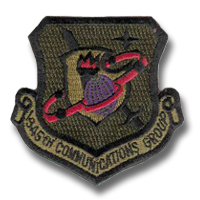 1945th Communications Group Patch 1945th Communications Group Patch (Source: Email from Vernon Meyer, 2057th RRS) I was stationed in Obernkirchen from Apr 1963 until June of 1966 with the 2057th RRS out of Kassel. We were Det 28. Circa June 1965 we became Det 8 of the 1945th out of Rhein Main. I noticed some radio link discrepancies with your DCS Wideband System in Germany map. Obernkirchen shot to Köterberg and Wunsdorf with Siemens Y2X radios using PPM mux. We also shot to Wunsdorf, Holtum and Celle using AN/TRC-24 radios with AN/TCC-7 mux. There was no direct radio link between Wunsdorf and Celle or Celle and Holtum. We had two PPM shots to Köterberg, one with mux at Obernkirchen and one a through repeater to Wunsdorf. So, we had six shots in all, two to Köterberg, two to Wunsdorf, one to Celle and one to Holtum. Hope this info helps. Vernon Meyer Thanks, Vernon! This is exactly the kind of help I need. Guys, any other corrections necessary or additions that should be added? Walter (Source: Email from Jay Fowler, 1965-68) I happened upon your website and would like to know how to establish contact with anyone who was stationed with the 1945th Comm Squadron at Wunstorf Germany in the 1960's. I was stationed at Wunstorf from February 1965 till February 1968 and worked in power production. Besides Wunstorf, we maintained the backup generators at the remote sites Celle, Kassel and Köterberg. Wunstorf was located on a large German Airbase of over 3000 soliders and our detachment was under 70 people. Our detachment included a Troposphere shot to Berlin and a Radio Relay site. It was a great location, only minutes from Steinhude Meer which was and has become an even greater tourist attraction. Because the nearest hospital & commissary was in Bremerhaven, we were paid overseas pay (a big $8 a month at that time). It wasn't until recently that I found out what the mission was at Wunstorf. I was in power production and was never allowed access to the tropo or radio relay trailers. In the 3 years I was there we only went on alert where everyone was armed once and I don't remember what the incident was. I still don't know when the Wunstorf site first went into operation. I spoke to another airman who was there aroung 1963 and said that he was one of the first. This contradicts a comment on your webpage "In 1958, I transferred to a remote MSQ site at Wunsdorf (Webmaster: OL #7, 601st AC&W Sq?) - Call sign: Suzy Q." The German base we were living on has quite a bit of history, having been heavily involved in the Berlin airlift. Our detachment and the remote sites were all shutdown around 1970. One of the airman I was stationed with returned on a second tour and was involved with the dismantling. The German base is still very active. |
||||||||||||||||||||||||||||||||||||||||||||||||||||||||||||||||||||||||||||||||||||||||||||||||||||||||||||||||||||||||||||||||||||||||||||||||||||||||||||||||||||||||||||||||||||||||||||||||||||||||||||||||||||||||||||||||||||||||||||||||||||||||||||||||||||||||||||||||||||||||||||||||||||||||||||
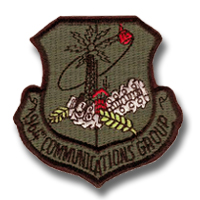 1964th Communications Group Patch 1964th Communications Group Patch(Source: Email from Mark Gilbert, Det 3, 1964th CG) I was in the Air Force in Germany from 1982 to 1984. My unit was Det. 3, 1964 Comm. Group I worked in the Wideband radio shop at Boerfink. As a matter of fact, I lived in that little village. Most of my time was spent with the German AF at Sandkopf bunker. During my time, it was a UHF/VHF transmitter site for the German AF. We (US) had a 3KW HF transceiver and several UHF/VHF transmitters. The German fellows spent most of their time fixing TVs. Ruppelstein bunker was the receiver site. Both locations were located on the same mountain. I had a chance to go back to the area when I was activated after 9/11. Boerfink was cleared of surface buildings, all that remained was the bunker entrance. The area inside the fence was well kept. Sandkopf was still operational with a single German at the entrance. Our billets were located at Neubruecke (“ Sandkopf bunker was small in scale compared to Boerfink. It had 3 to 4 GAF and one or two German civilian technicians and two to three civilian guards with a big dog or two and a janitor. All the Germans were from HHK (Heinrich-Hertz-Kaserne) located in Birkenfeld. All that could be seen from the fence was one support and the large steel door on a concrete face. Det. 3, 1964 CG was located at Ramstein. They didn’t know much about us and we didn’t ever see them. We were a “outpost.” At the time we could not tell anyone much about our mission. The Det. 3 people at Boerfink was made up of 3-4 inside plant telco guys, 3-4 Wideband Radio, 5-6 Tech. Controllers, DSTE, Crypto and a Supply Sgt. There were some admin folks that worked at Neubruke. We received our supplys and parts from Ramstein and out test equipment went to Hahn A.B. to the PMEL lab. The whole area was a mix of Army, AF and Army and AF working direcly with NATO. You can think of the whole complex as the German’s (Webmaster Note: in May 1973, the 2135th Communications Squadron, located at Ramstein AB, Germany, was redesignated as the 1964th CG ) |
||||||||||||||||||||||||||||||||||||||||||||||||||||||||||||||||||||||||||||||||||||||||||||||||||||||||||||||||||||||||||||||||||||||||||||||||||||||||||||||||||||||||||||||||||||||||||||||||||||||||||||||||||||||||||||||||||||||||||||||||||||||||||||||||||||||||||||||||||||||||||||||||||||||||||||
| (Source: ECHO, March 1987) | ||||||||||||||||||||||||||||||||||||||||||||||||||||||||||||||||||||||||||||||||||||||||||||||||||||||||||||||||||||||||||||||||||||||||||||||||||||||||||||||||||||||||||||||||||||||||||||||||||||||||||||||||||||||||||||||||||||||||||||||||||||||||||||||||||||||||||||||||||||||||||||||||||||||||||||
|
||||||||||||||||||||||||||||||||||||||||||||||||||||||||||||||||||||||||||||||||||||||||||||||||||||||||||||||||||||||||||||||||||||||||||||||||||||||||||||||||||||||||||||||||||||||||||||||||||||||||||||||||||||||||||||||||||||||||||||||||||||||||||||||||||||||||||||||||||||||||||||||||||||||||||||
| 1990 | ||||||||||||||||||||||||||||||||||||||||||||||||||||||||||||||||||||||||||||||||||||||||||||||||||||||||||||||||||||||||||||||||||||||||||||||||||||||||||||||||||||||||||||||||||||||||||||||||||||||||||||||||||||||||||||||||||||||||||||||||||||||||||||||||||||||||||||||||||||||||||||||||||||||||||||
| (Source: Email from Kenton Ahrens) | ||||||||||||||||||||||||||||||||||||||||||||||||||||||||||||||||||||||||||||||||||||||||||||||||||||||||||||||||||||||||||||||||||||||||||||||||||||||||||||||||||||||||||||||||||||||||||||||||||||||||||||||||||||||||||||||||||||||||||||||||||||||||||||||||||||||||||||||||||||||||||||||||||||||||||||
| Not that it’s completely USAREUR, but I have more info on the European DCS Wideband (Microwave) or Phase IV of the DEB microwave project. These were operational by the time I got there as a fresh USAF 304X0 (Wideband Communications Equipment) A1C or Airmen First Class in February of 1990. Sadly, most of the DEB has been turned down and now rides on commercial fiber facilities with the phase IV link ending it’s short lifespan somewhere around the 1994/1995 timeframe. End of an era, indeed! Phase IV DEB extended from Prum Air Station (PUM) All that way up North-Western Germany, across the Netherlands and ending at Woensdrecht, NL which was a base built-up by the US in support of the defunct Ground Launched Cruise Missile System or GLCM. Out of the 6 GLCM bases in Europe, Woensdrecht was the only one never to go fully operational by the time the INF treaty was signed between the Soviet Union and NATO in 1987. What many don’t know is that DEB’s secondary yet most important mission was to support GLCM. The DEB phase IV sites were, in order, from Prum: to Roetgen (NATO Lammersdorf) – 50 39’ 58.87”N, 6 17’ 06.51”E Also a former ACE HIGH and RAF Tropo site to Bruggen (RAF Bruggen) – 51 11’ 26.65”N, 6 06’ 47.54”E Also a former US Army ET-A Tropo Site between Stein and Hoek Van Holland. The US Army was originally responsible for the Bruggen site though a contractor was stationed there to maintain the site till it was transferred to the USAF or us. This happened after the US Army shutdown the ET-A Tropo link from Stein. Sites transferred to the USAF and us were Bruggen and Hoek Van Holland in the Netherlands. Though Hoek was completely powered down and kept in caretaker status by the USAF till it was sold back to the Dutch government. The Mickey Mouse Tropo antennas are still there though but in quite sad shape. The Bruggen four-legged lattice DEB tower was dismantled and DEB/Tropo building facilities have been completely removed. to Herongen (US Army vehicle garrison/depot) – 51 22’ 05.10”N, 6 14’ 23.17”E 300’ tall concrete hardened DEB tower and building are still there. to Kalkar AS (German Kaserne) – 51 44’ 0.46”N, 6 16’ 16.86”E Home of Det 26, 1945th Comm Group out of Rhein Main AB. We maintained it all from Bruggen up and over to Woensdrecht. Our nearest support base was Soesterberg AB in the Netherlands. The next nearest USAF widebander maintenance team was Det 23, 1945CG at Prum AS or Shoenfeld as some called it. There was also an OL or outlying group attached to us and stationed in Flobecq, Belgium to maintain the phase III Belgium link of the DEB. The Kalkar 300’ tall hardened concrete DEB tower was finally taken down or dismantled on the German Von Seydlitz Kaserne. Had many good and bad memories on that tower. to Erp (Dutch Comm Site) – 51 36’ 13.19”N, 5 38’ 29.84”E Still active military comm. site! I think in support of nearby and still active NATO Voekel AB. to Vught (Dutch Base) – 51 39’ 35.35”N, 5 15’ 32.94”E to Keizersveer (Dutch Base) – 51 42’ 47.93”N, 4 53’ 26.24”E Not sure of the exact location of this repeater site. The Dutch were already closing this base down before I even left and I think much of it was returned to civilian use. to Woensdrecht (Dutch Airbase) – 51 26’ 22.66”N, 4 20’ 1.56”E Much of the runway infrastructure and buildings are now in use as an aircraft maintenance depot. The hardened 300’ tall concrete microwave tower and building where the DEB was, are still there. There were talks of making another digital long distance microwave shot from here, across the English Channel to Ipswitch/Martlesham Heath in the UK when the US Army ET-A Tropo was shut down but it was either not feasible or cost-effective so it never came to fruition. Unlike the massive billboard antennas of the ACE HIGH Tropo system, the US Army ET-A Tropo used smaller but still quite large dish antennas for their tropo. I think it was also higher in frequency too. |
||||||||||||||||||||||||||||||||||||||||||||||||||||||||||||||||||||||||||||||||||||||||||||||||||||||||||||||||||||||||||||||||||||||||||||||||||||||||||||||||||||||||||||||||||||||||||||||||||||||||||||||||||||||||||||||||||||||||||||||||||||||||||||||||||||||||||||||||||||||||||||||||||||||||||||
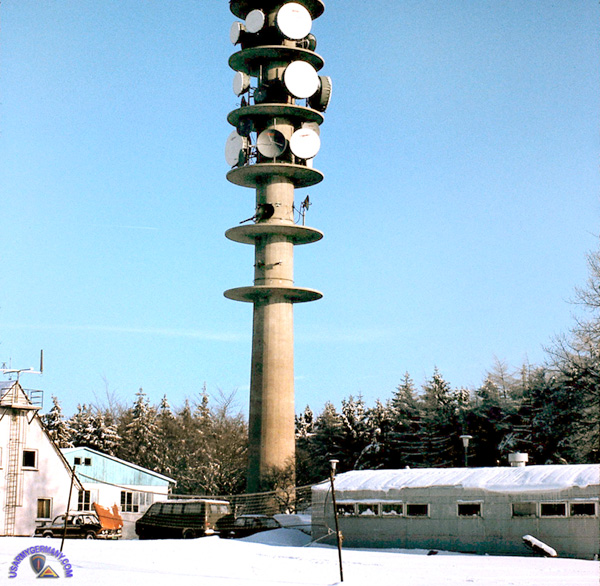 A multi-platformed concrete tower at Koenigstuhl with Andrew parabolic dishes, 1980 |
||||||||||||||||||||||||||||||||||||||||||||||||||||||||||||||||||||||||||||||||||||||||||||||||||||||||||||||||||||||||||||||||||||||||||||||||||||||||||||||||||||||||||||||||||||||||||||||||||||||||||||||||||||||||||||||||||||||||||||||||||||||||||||||||||||||||||||||||||||||||||||||||||||||||||||
| ADDITIONAL INFORMATION Most of the DEB that was built from the ground up was the new, hardened 300’ concrete tower kind (giant round concrete hollow cylinders stacked on each other with a ladder up the inside) with Andrew 8’, 10’ & 12’ parabolic dishes in space diversity. Meaning there were usually two beaming in one direction on different platform levels of the tower. There was a winch up top to raise and lower antennas/waveguide with the winch line running all the way down inside the tower to the winch motor at the bottom. Where there was already an existing comm. site, usually because it was an existing tropo site, the parabolic dishes were just added to the lattice tower that was already there. Old ACE HIGH tropo sites were massive billboards while the newer ET-A system was either twin diversity 12’ dishes or one single angle diversity dish like what was on the Bruggen lattice tower which is no longer there. The newest DEB equipment retrofit that was also what was initially installed in phase IV were the FRC-170 100Mb+, radios transmitting 2 watts of TWT generated RF on 8GHz (?Three? E3’s + 1 or 2 Wayside E1’s + orderwire). The radios ran in different diversity configurations based on the length of the MW path. Besides all having redundant transmitters & receivers with the redundant running on hot-standby, there were some that included frequency, polarity and space diversity, all in one station. Some MW path lengths were 30 miles +. The MUX’s included the FCC-99 Interim MUX (E3 to multiple E1 MUX), FCC-100 Data MUX & FCC-98 MUX (Glorified and hardened channel bank or E1 to 32 DS0’s) and, of course, the KG-84 Cryptos. All made by TRW. Since it was in Europe, it used the European standard of T-carrier hierarchy. Now I could be a little hazy about some of these details but this is what I remember. That was, after all, nearly 20 years ago. The biggest one was the actual capacity of the radios. I can’t remember if they were three E3’s or two. Also the exact function and capacity of the FCC-100 data MUX. Not sure if it broke down an E3 into multiple and sometimes aggregated E1’s or it sat on the wayside T1 and aggregated the multiple DS0’s. Another interesting note was that Kalkar AS was also an ETS or DISA European Telephone System switching center. This was the digital successor to the old AUTOVON switches which were still in operation, at the time. There was a Siemens KNS4100 digital telephone switch there at Kalkar which had one telephone troop assigned to maintain it. We Widebanders were also cross-training to maintain it as well. At any rate, that’s a little more than you asked for but I spit it out because I am still nostalgic about it all. |
||||||||||||||||||||||||||||||||||||||||||||||||||||||||||||||||||||||||||||||||||||||||||||||||||||||||||||||||||||||||||||||||||||||||||||||||||||||||||||||||||||||||||||||||||||||||||||||||||||||||||||||||||||||||||||||||||||||||||||||||||||||||||||||||||||||||||||||||||||||||||||||||||||||||||||
|
||||||||||||||||||||||||||||||||||||||||||||||||||||||||||||||||||||||||||||||||||||||||||||||||||||||||||||||||||||||||||||||||||||||||||||||||||||||||||||||||||||||||||||||||||||||||||||||||||||||||||||||||||||||||||||||||||||||||||||||||||||||||||||||||||||||||||||||||||||||||||||||||||||||||||||
| (Source: Electronic Systems Center, Hanscom AFB, May 1996) | ||||||||||||||||||||||||||||||||||||||||||||||||||||||||||||||||||||||||||||||||||||||||||||||||||||||||||||||||||||||||||||||||||||||||||||||||||||||||||||||||||||||||||||||||||||||||||||||||||||||||||||||||||||||||||||||||||||||||||||||||||||||||||||||||||||||||||||||||||||||||||||||||||||||||||||
| Digital European Backbone Complete By Jack Rankin A digital, microwave communications network which provides secure voice and data transmissions to U.S. commanders in Europe has completed its upgrade program and is fully operational. Known as Digital European Backbone and managed by the Electronic Systems Center, the last link in the completely upgraded network has been turned over to United States Air Forces, Europe. The system now has 83 fully-operational equipment sites in Belgium, England, Germany and Italy. "Digital European Backbone provides line-of-sight, microwave links connecting each site in the network and is the primary means of long-haul communications for US forces in Europe," said John Meyn, DEB prgram manager at ESC. "We modernized the network's equipment to build a modern, technological base that provides a sophisticated communications medium for voice, fax, computers and high data rate transmissions." Capacity on this replacement of the decades-old analog network has been doubled and features improved quality of transmissions. The system has also been made resistant to hostile signal interception. It can now support such subsystems as the European Telephone System, Secure Telephone System, the Defense Switched Network and the Defense Data Network, according to Meyn. The upgrade to the communications system was accomplished in four stages. Stage I provided an analog (sic) backbone system from Northern Italy to Southern Germany. Stage II further extended the system through central Germany; Stage III added Belgium and the United Kingdom; and Stage IV added Italy to the network. Fifty of the 83 sites are unmanned and 40 are managed by the Air Force and 43 by the Army, said Meyn. "The completed network has been turned over to the Defense Information Systems Agency, which will be the primary manager of the network," said Meyn. |
||||||||||||||||||||||||||||||||||||||||||||||||||||||||||||||||||||||||||||||||||||||||||||||||||||||||||||||||||||||||||||||||||||||||||||||||||||||||||||||||||||||||||||||||||||||||||||||||||||||||||||||||||||||||||||||||||||||||||||||||||||||||||||||||||||||||||||||||||||||||||||||||||||||||||||
Related Links: Pruem Air Station - wonderful site presenting the Pruem AS, primarily a USAFE communications and radar installation but also home to Company "A", 447th Signal Battalion First Radio Relay 12th Radio Relay Squadron - a Yahoo Group (membership required) dedicated to all former members of the 12th Radio Relay Squadron who served at Pforzheim Air Station and the outlying 44 Radio Relay Sites. (An associated Yahoo Group, the 1944th Comm Sq, covers the follow-on units, 2060th RRS and 1944th CS.) Siegelsbach - 2005th Communications Squadron NATO ACE-HIGH Richtfunkstation AFEZ Feldberg - German reunion group for veterans who served at the ACE HIGH communications site on top of the Feldberg/Schwarzwald. Some great Feldberg photos! ACE HIGH - Andy Emmerson's page on the tropospheric scatter/microwave link system that SHAPE developed as an exclusive communications system comprising the minimum essential circuits of early warning and alert and implementation of the 'tripwire’ retaliation strike plan. TUSLOG Det 150 - Pat Shediack's very detailed account of the Air Force strategic communications site at Sahintepe, Turkey. The AUTOVON Exchange at Ipswitch - a very interesting page on the Bunkertours web site. The AUTODIN Legacy Project - NATO: the first five years 1949-1954 - online in the NATO Archives Signal Unit - SSI's and DUI's (Institute of Heraldry) Feldberg RRL - DET 16, 2140th CS (USAF), Yiannitsa, Greece - nice page on one of the Air Force Cemetery Net units in Greece American military transmitters in Hoek van Holland |
||||||||||||||||||||||||||||||||||||||||||||||||||||||||||||||||||||||||||||||||||||||||||||||||||||||||||||||||||||||||||||||||||||||||||||||||||||||||||||||||||||||||||||||||||||||||||||||||||||||||||||||||||||||||||||||||||||||||||||||||||||||||||||||||||||||||||||||||||||||||||||||||||||||||||||

